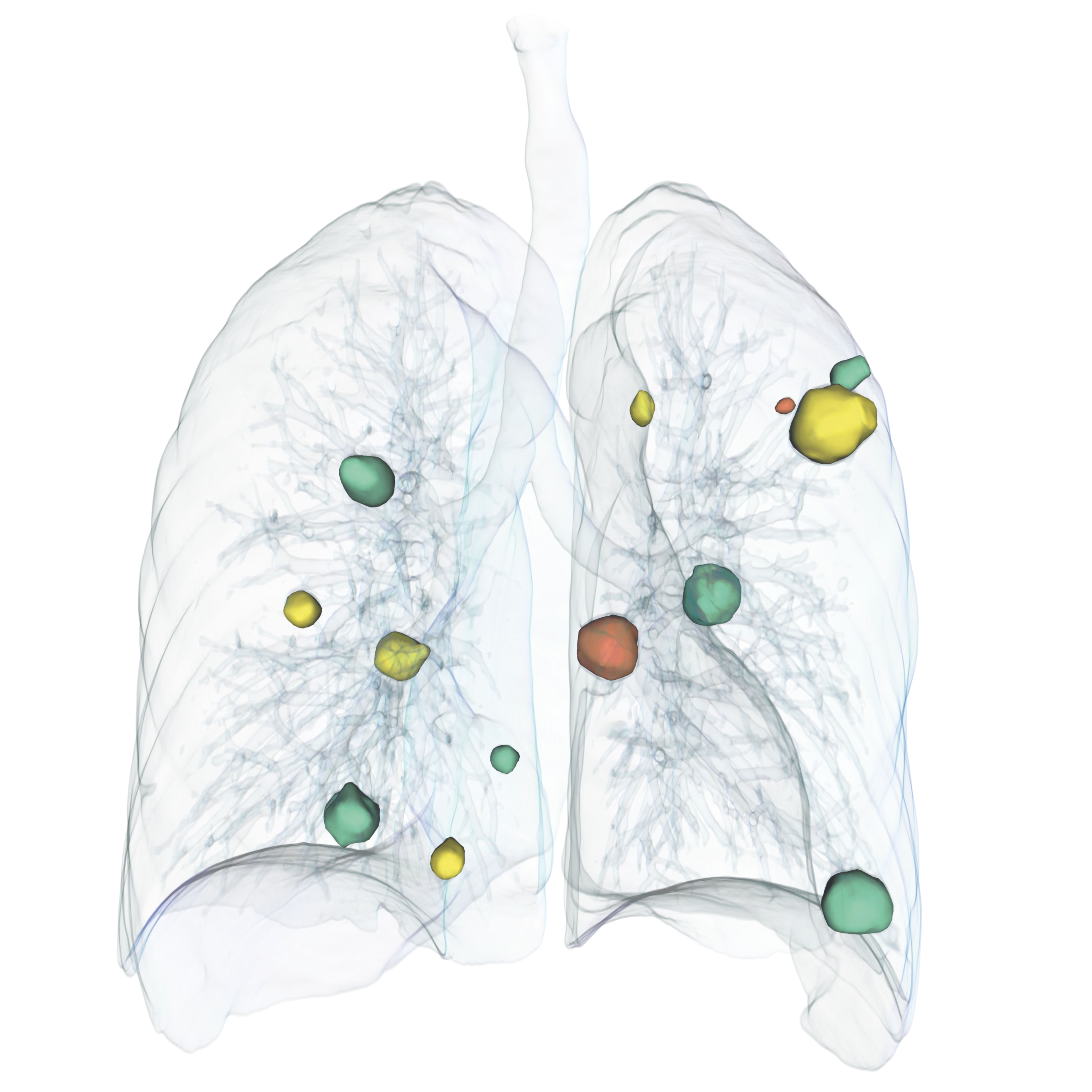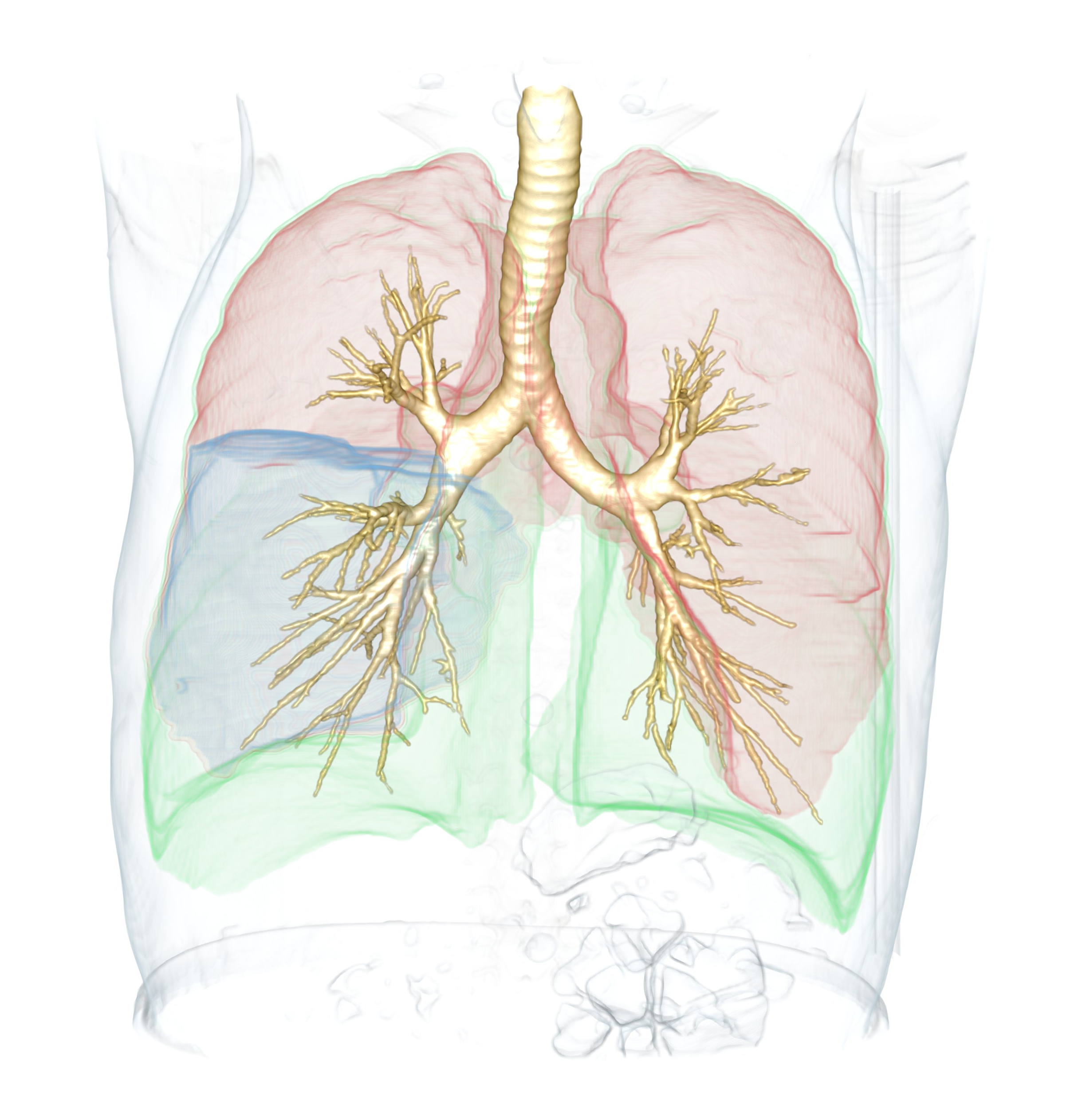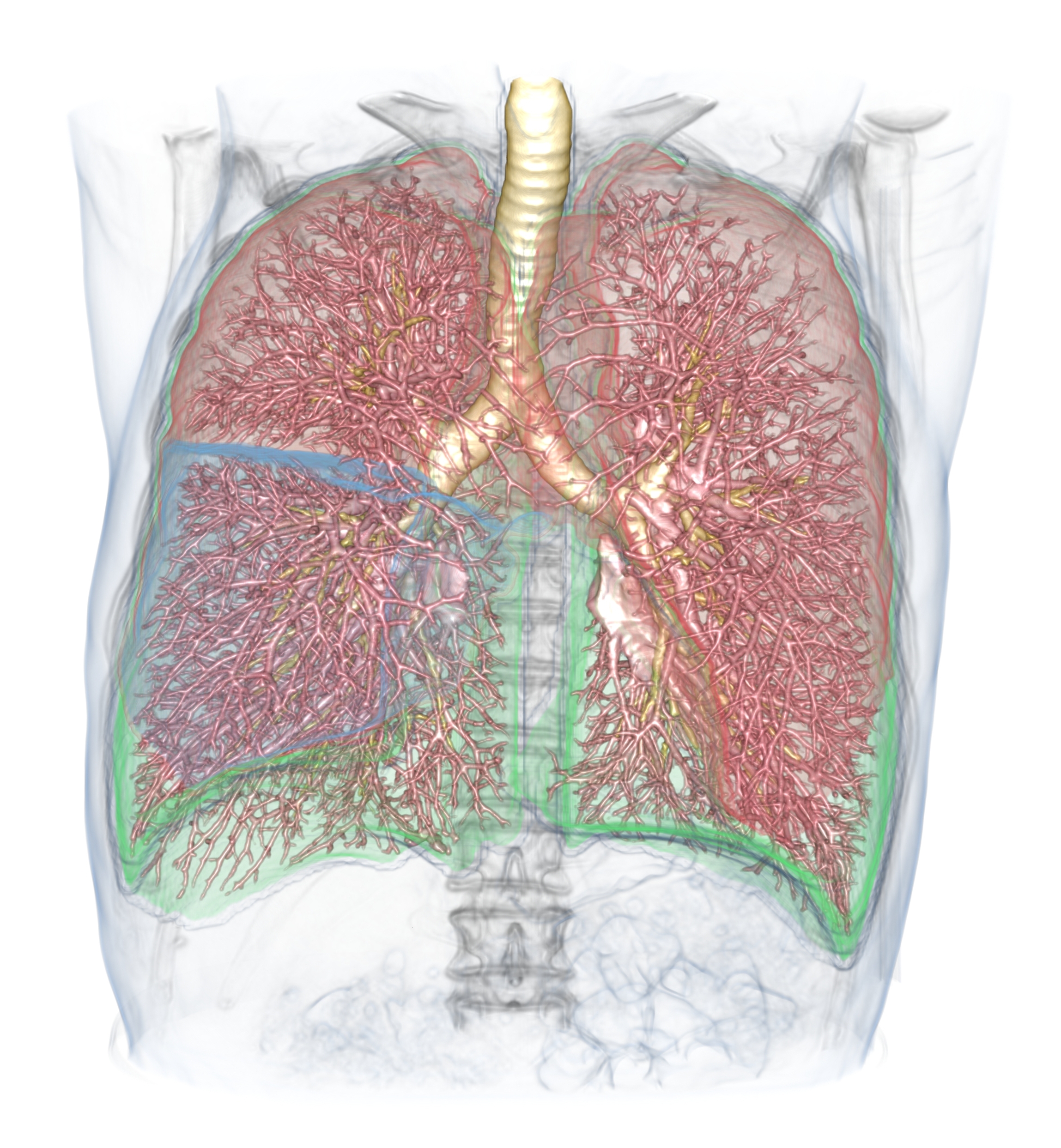Clinical Challenges
Key factors for successful treatment of lung diseases such as lung cancer and chronic obstructive pulmonary disease (COPD) are early diagnosis, accurate progress monitoring, and optimal, patient-specific selection and execution of treatment options. CT and MRI imaging can be valuable for each of these tasks, but thorough analysis of images remains challenging for human observers.
Fraunhofer MEVIS develops software solutions for automated CT and MRI lung image analysis to detect and monitor diseases and plan interventions. Algorithms for automatic segmentation and quantitative analysis of anatomical structures provide radiologists and pulmonologists with valuable data. Accurate lung image registration allows optimized workflow, for example, when integrating prior scans or multiple scans of different inspiration levels. By combining efficiency and accuracy, these solutions help provide the highest standards of healthcare to a broad range of patients.
Fraunhofer MEVIS closely collaborates with the Diagnostic Image Analysis Group (DIAG) in Nijmegen. The collaboration in lung image analysis focuses on developing software solutions to diagnose and treat COPD and to diagnose lung cancer.
Solutions & Features
- Automated Lung CT Segmentation Algorithms [1-11]
Fraunhofer MEVIS and DIAG have developed fast, automated segmentation and labeling methods for lungs [1, 2], lobes [3, 4, 5, 10, 11], fissures [6], bronchial tree, and pulmonary nodules [7, 9]. Segmentation performance (LOLA’11 Challenge) [8, 1]:- High Accuracy: Ranked 1st for both lung and lung lobe segmentation (at the time of publication)
- High Speed: Less than 1 minute for the lungs and 3 minutes for the lung lobes
- Fast & Accurate Lung CT Registration Methods [12-16]
Fraunhofer MEVIS has developed a deformable lung registration method capable of registering lung CT scans with sub-millimeter accuracy at a runtime of only 25 seconds [12, 13]. It is therefore suitable for fast and reliable matching of various lung features across different scans in the clinical routine. Registration performance (EMPIRE’10 Challenge) [14, 15]:- High Accuracy: Ranked 5th out of 36
- Unmatched speed: Less than 30 seconds for inspiration-expiration registration
The latest development is a deep learning based registration approach [16].
- MR-based Quantitative Lung analysis [17]
Using automated lung segmentation [17], the PulmoMR software allows regional blood perfusion and ventilation analysis in dynamic MR images.
- COPD CT Analysis [18-19]
For diagnosis, treatment planning, and monitoring in COPD patients, regional emphysema and fissure integrity quantification can be correlated with subvoxel- accurate measurements of airway geometry.
- Lung Surgery Risk Analysis and Planning [20-22]
Key features are interactive 3D exploration of the surgery situs and quantitative analysis for risk assessment in planning pneumectomies, lobectomies, and segmentectomies [20, 21, 22] as well as lung volume reduction therapy for COPD treatment.
- AI-based lung analysis with SATORI [23]
AI-based fast segmentation combined with a generic interactive annotation tool enables quantitative lung analysis and the generation of training data for deep learning and radiomics.
Highlights
- State-of-the-art technologies such as deep learning
- Best in Class Lung CT Segmentation: Lungs, Lobes, Nodules
- Fastest Accurate Lung CT Registration Available
- PulmoMR: Software for MR-based Quantitative Lung Analysis
- Quantitative COPD Analysis Including Highly Accurate Airway Wall Measurements
- Lung Surgery Risk Analysis and Planning
- SATORI: AI-based automatic segmentation and annotation
[1] Lassen B et al. Fourth International Workshop on Pulmonary Image Analysis 2011
[2] van Rikxoort EM et al. Med Phys 2009
[3] Lassen B et al. IEEE Trans Med Imaging 2013
[4] Lassen B et al. SPIE Medical Imaging 2011
[5] van Rikxoort EM et al. IEEE Trans Med Imaging 2010
[6] van Rikxoort EM et al. IEEE Trans Med Imaging 2008
[7] Kuhnigk JM et al. IEEE Trans Med Imaging 2006
[8] LOLA‘11 Challenge
[9] Lassen et al., Physics in Medicine and Biology, 2015
[10] Lassen-Schmidt et al., Physics in Medicine and Biology, 2017
[11] Lassen-Schmidt et al., MIDL 2020
[12] Rühaak J et al. SPIE Medical Imaging 2013
[13] König L et al. IEEE International Symposium on Biomedical Imaging 2014
[14] EMPIRE‘10 Challenge
[15] Rühaak J et al. EMPIRE’10 Challenge 2010
[16] Hering et al, MICCAI, 2019
[17] Kohlmann P et al. Int J Comput Assist Radiol Surg 2014
[18] Kuhnigk JM et al. Radiographics 2005
[19] Mets OM et al. Respir Res 2013
[10] Stoecker C et al. Med Phys 2013
[21] Welter S et al. Thorac Cardiovasc Surg 2012
[22] Limmer S et al. Chirurg 2010
[23] Klein et al. Proc. SPIE 11318 2020
 Fraunhofer Institute for Digital Medicine MEVIS
Fraunhofer Institute for Digital Medicine MEVIS


